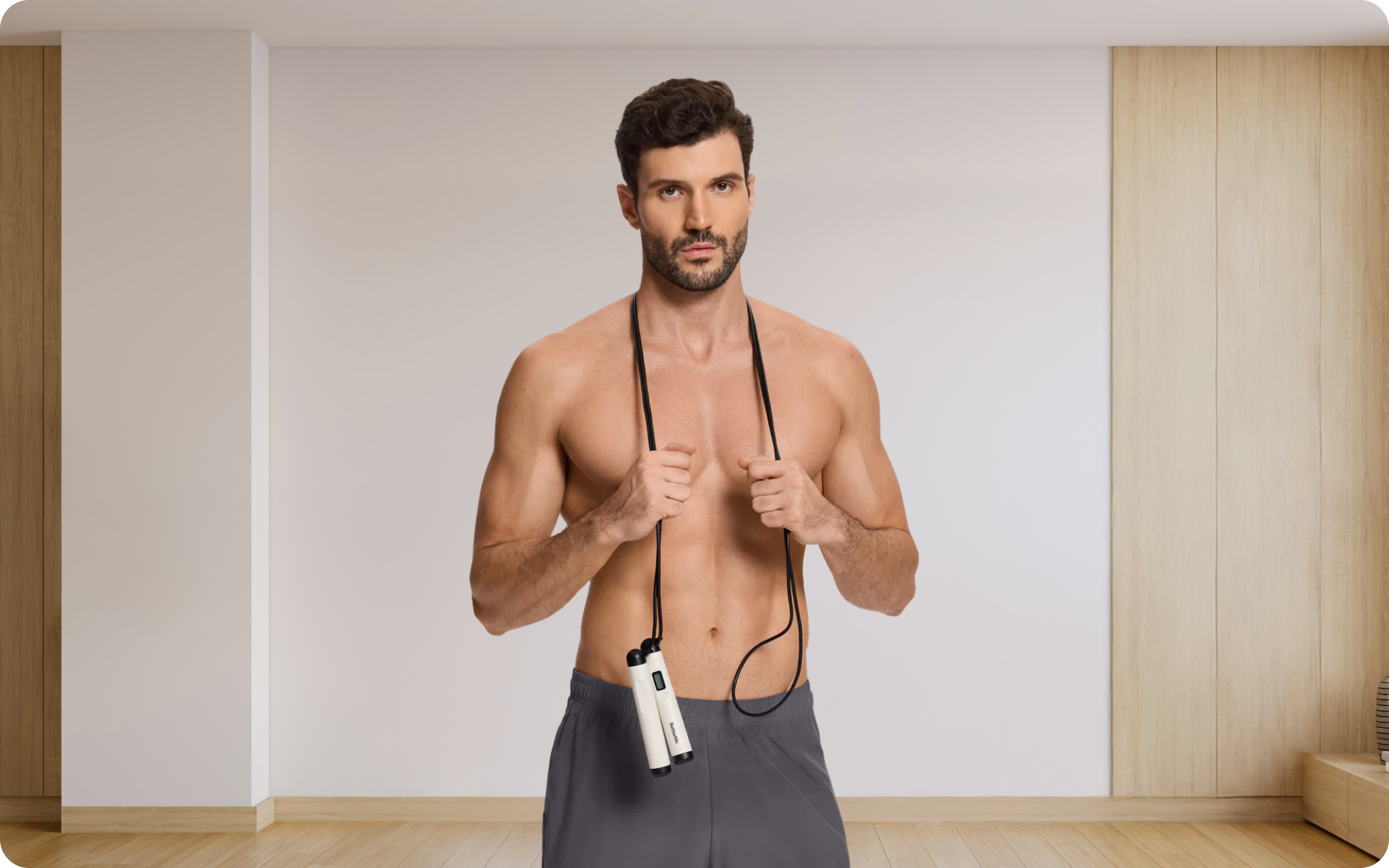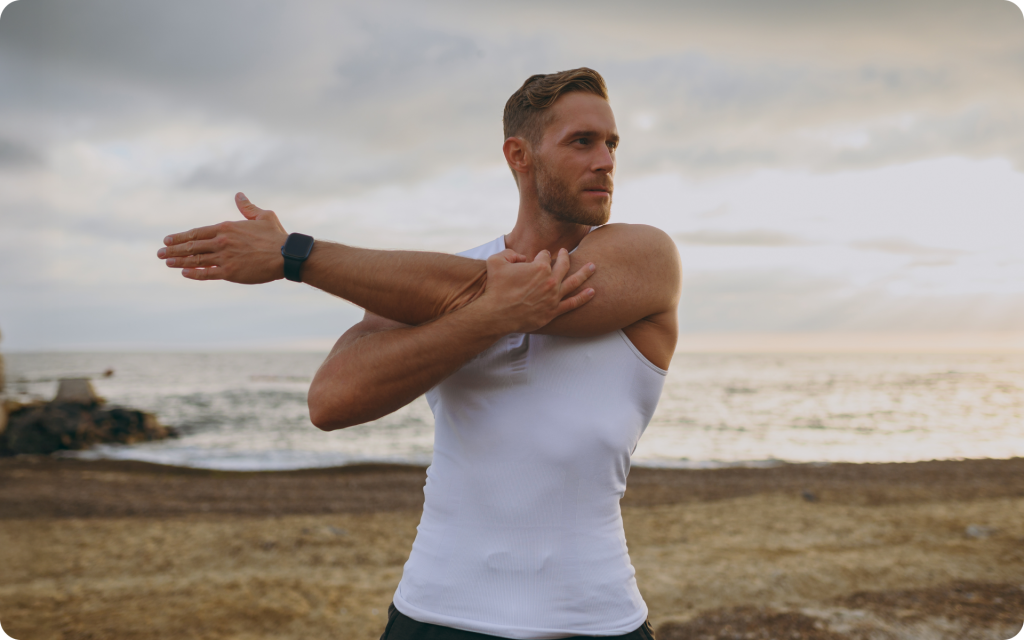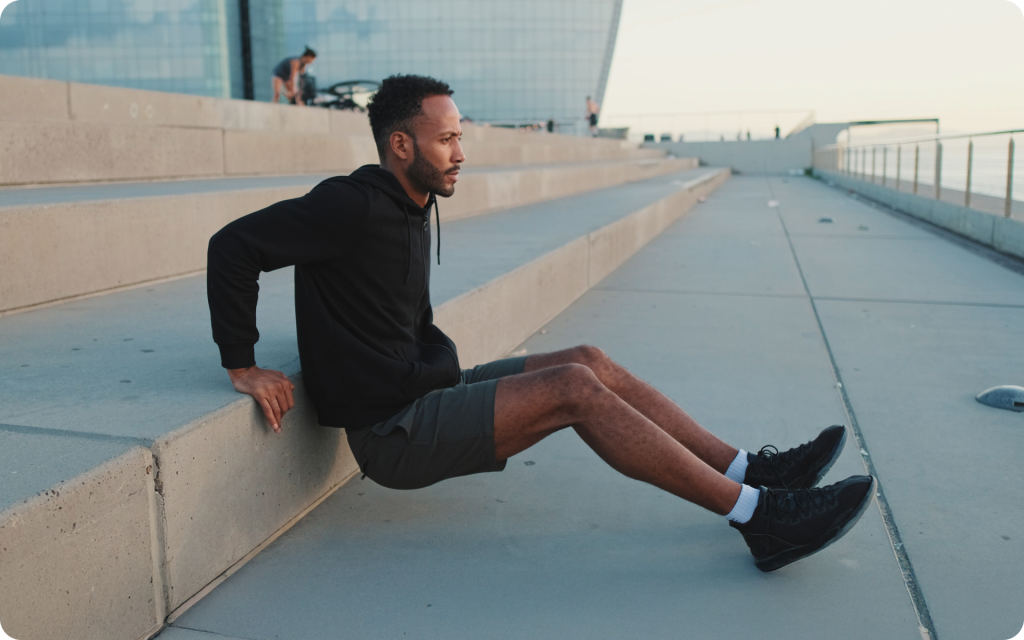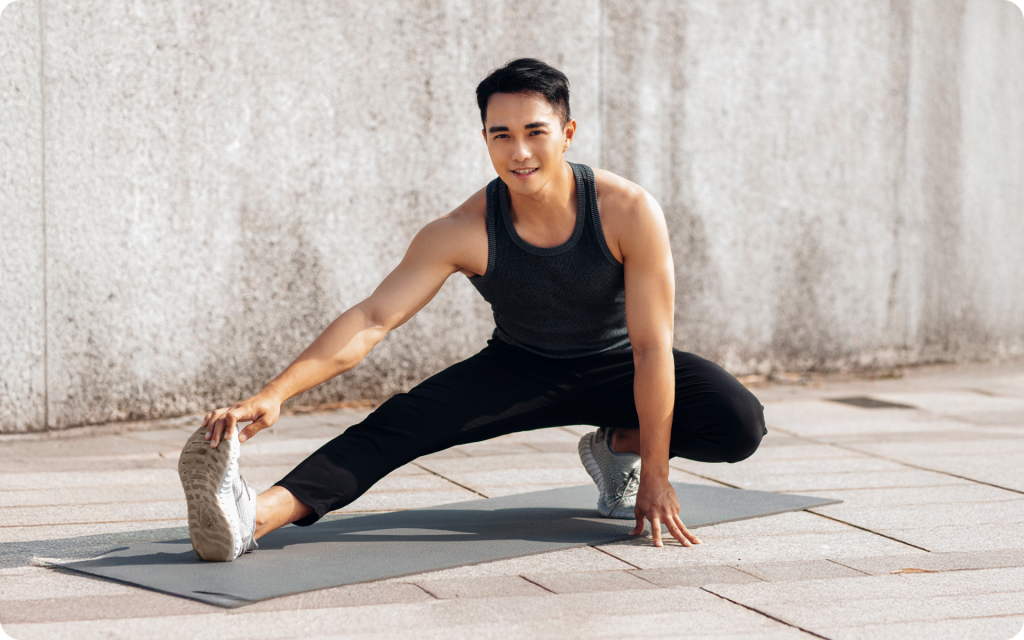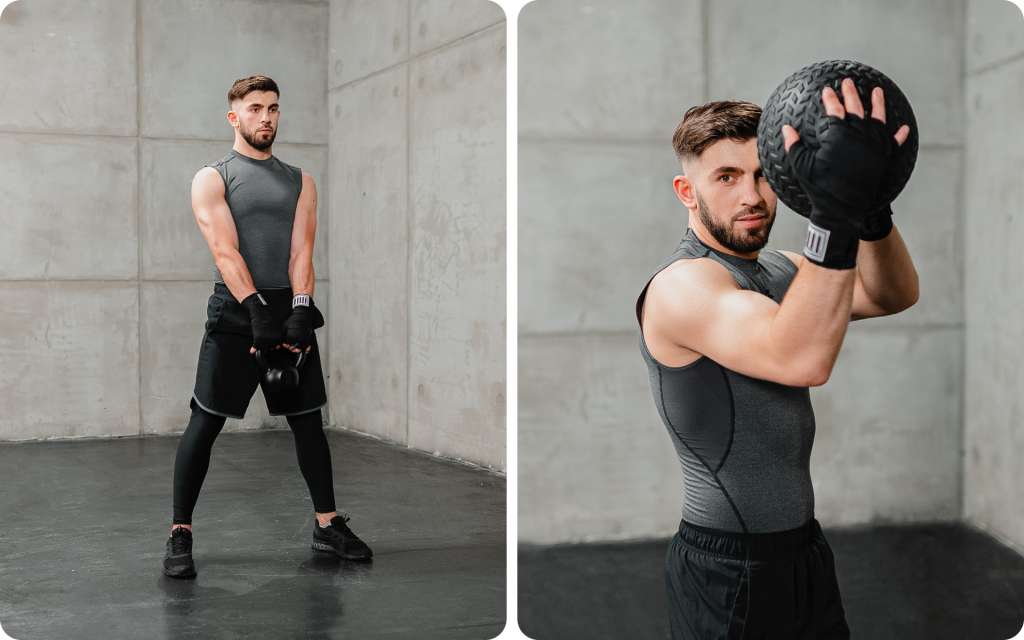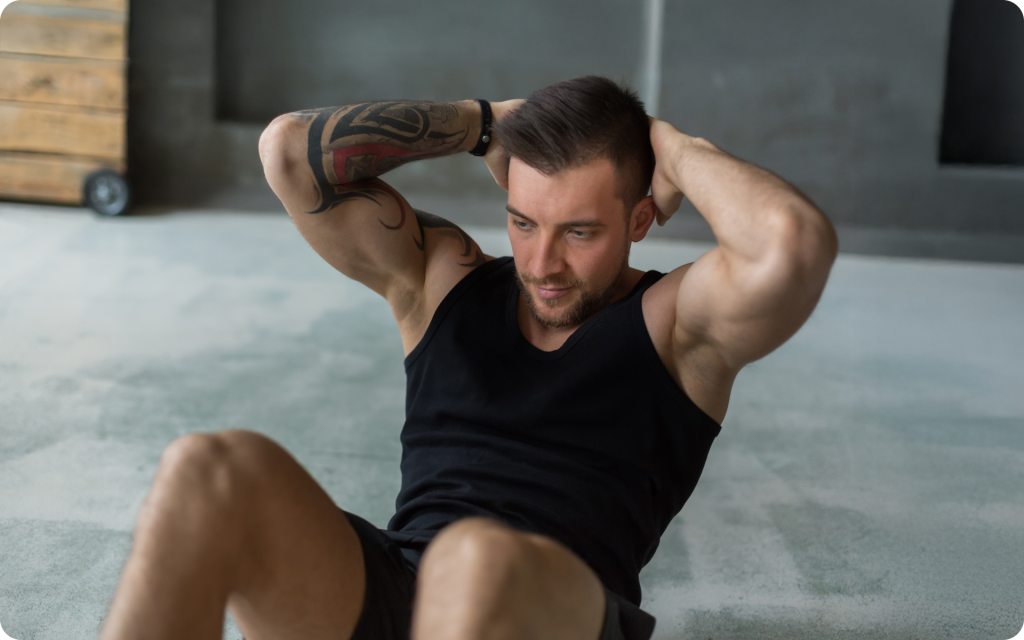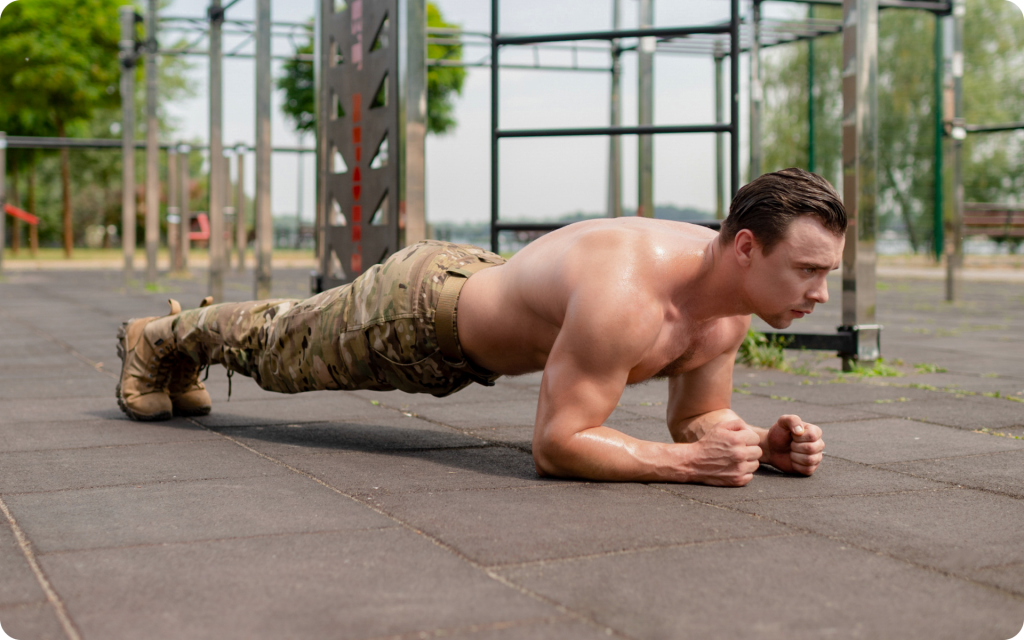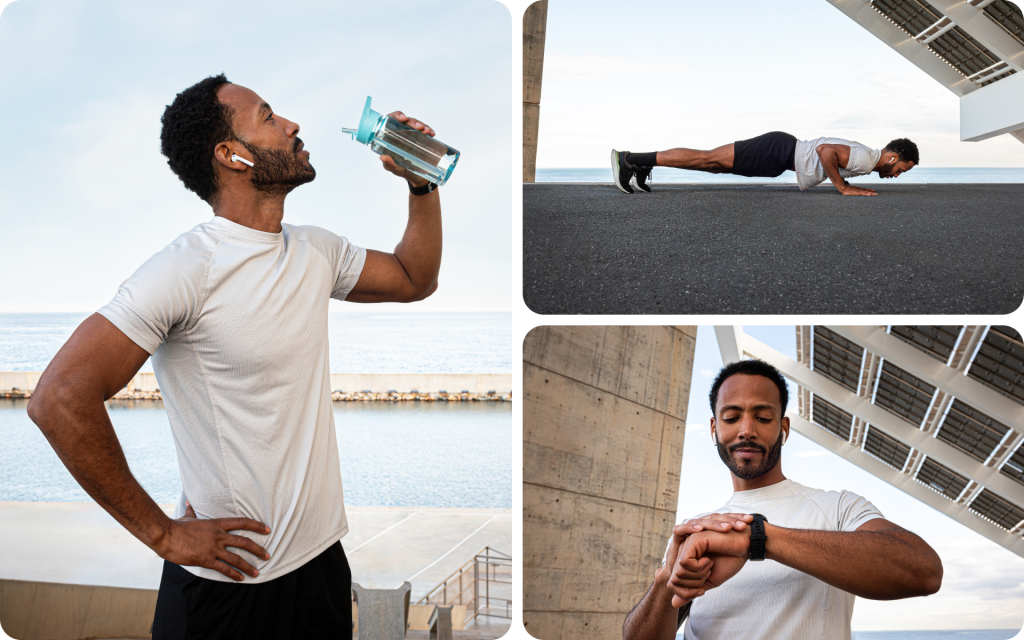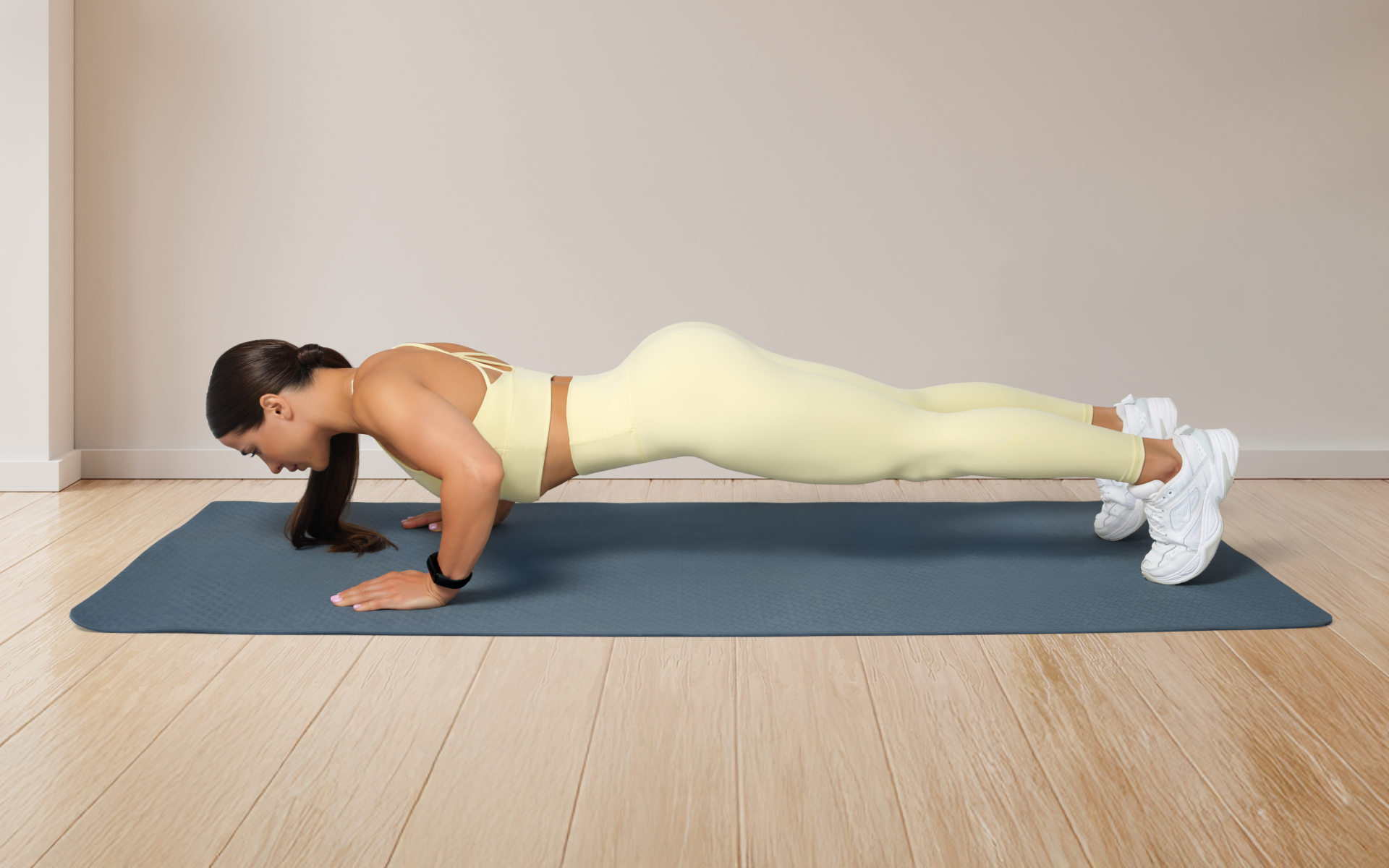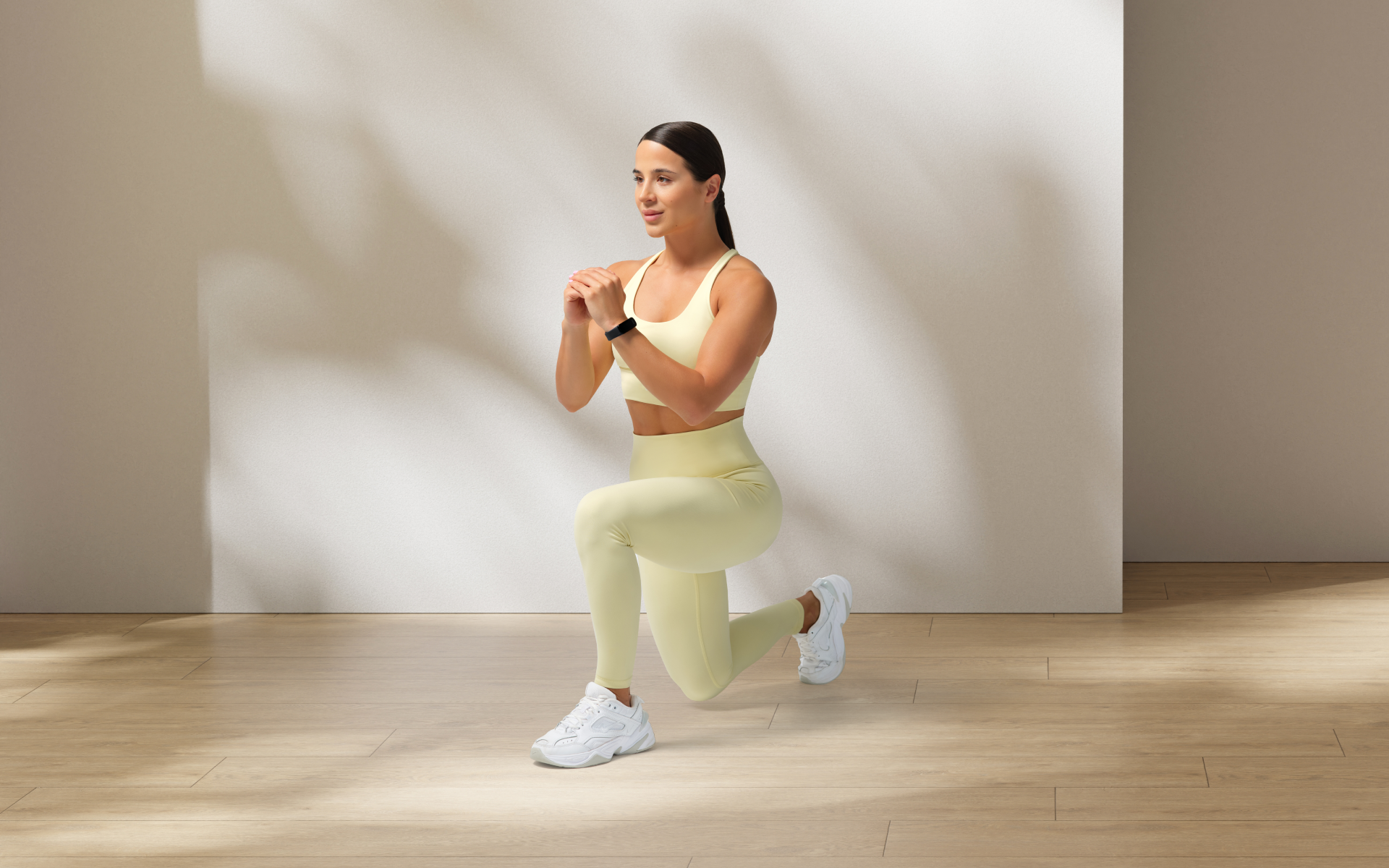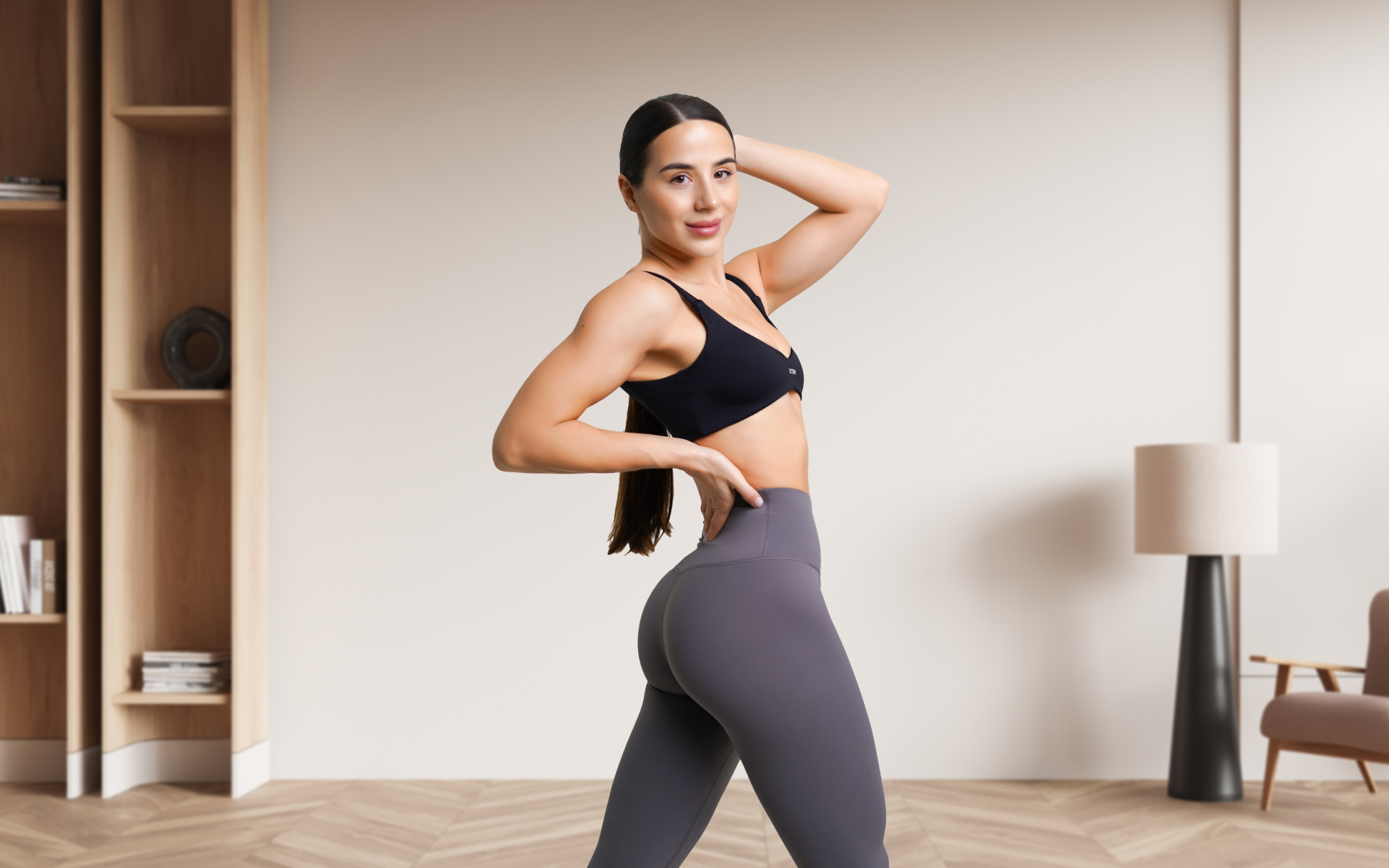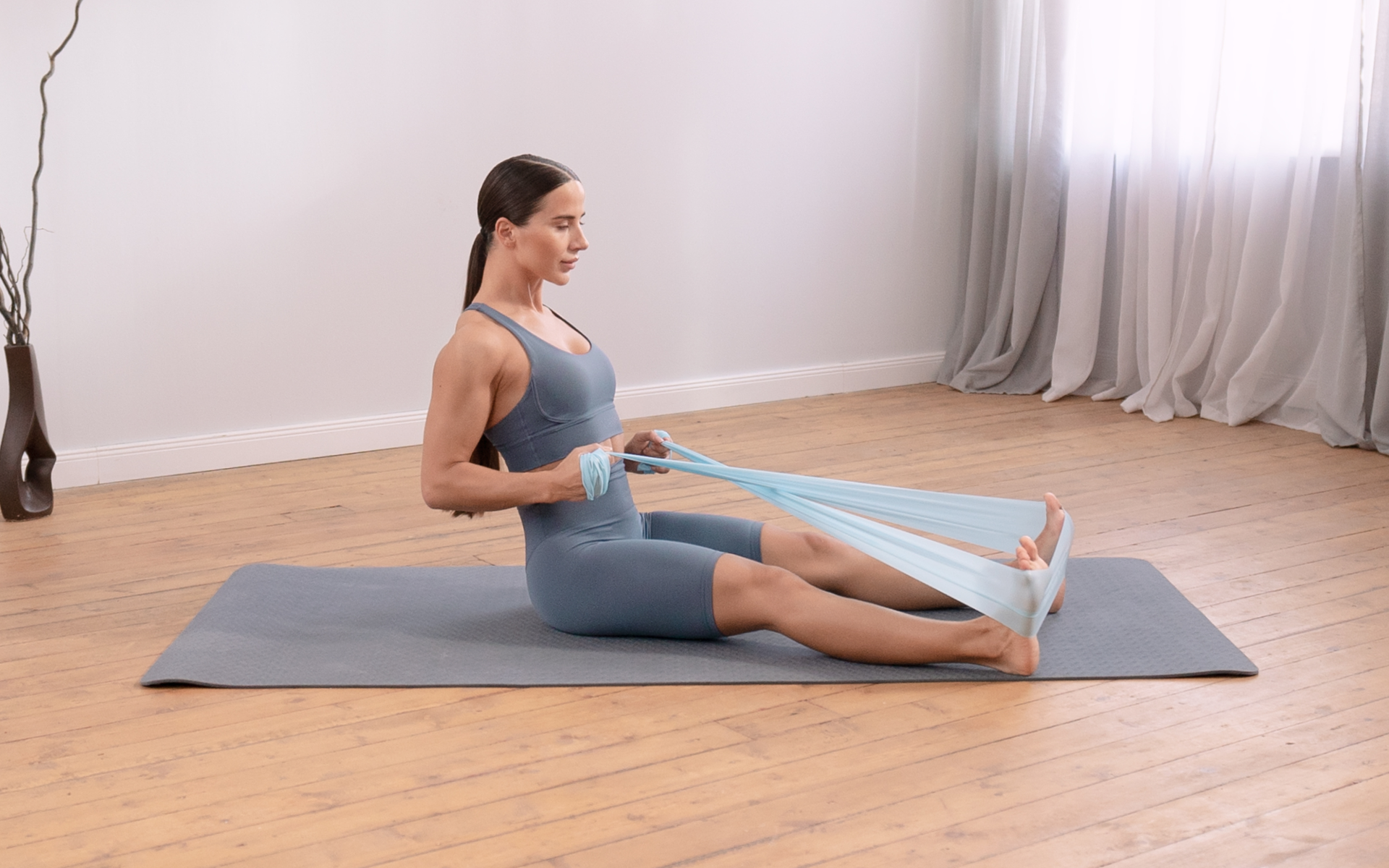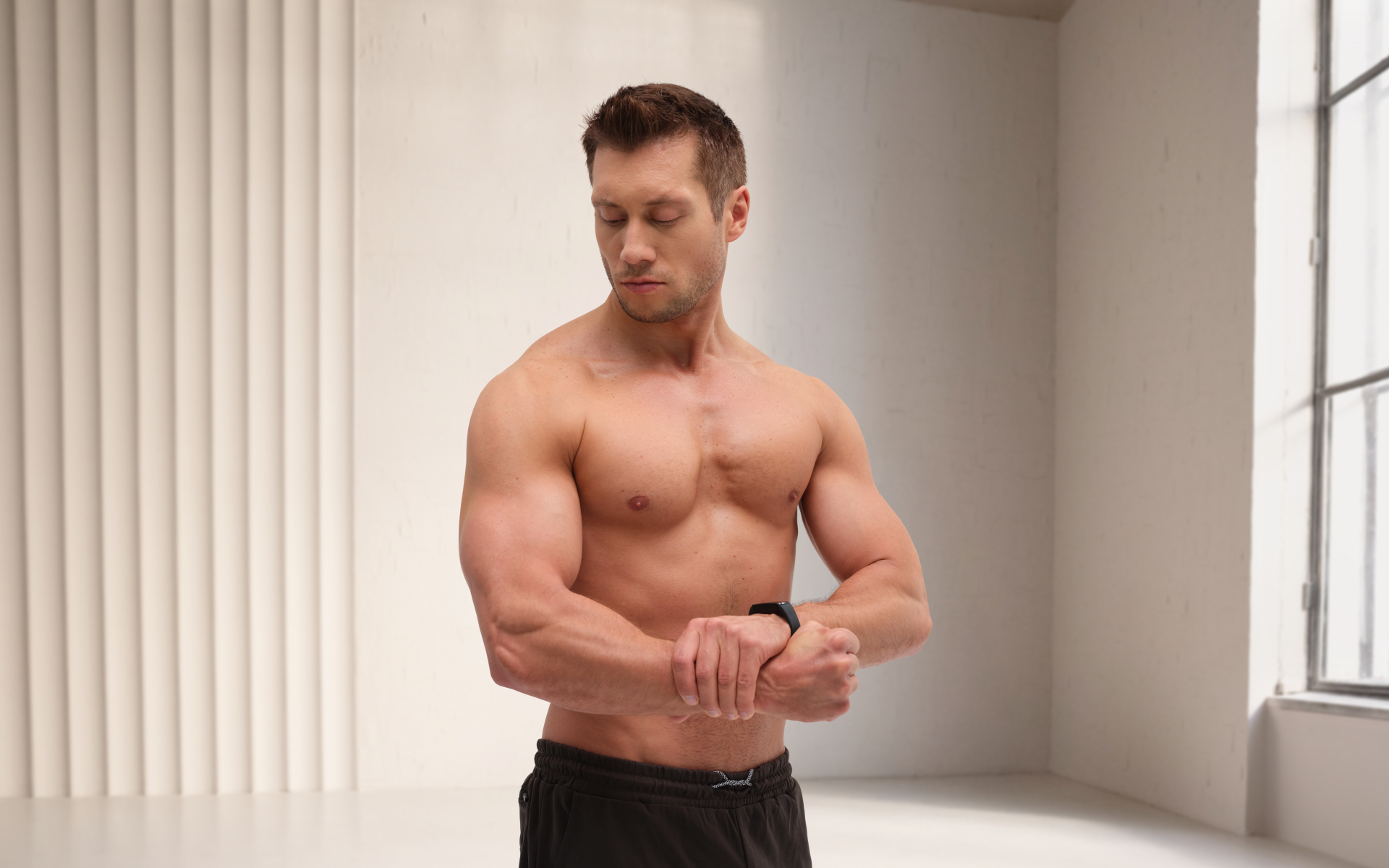We are all on the lookout for an exercise routine that gets us moving, grooving, sweating, and feeling stronger—all within an hour.
You have many things to do, but prioritizing your health can still be part of the to-do list without spending too much time.
While we all want to find the motivation to hit the gym, there’s no doubt that we’d love the flexibility of working out anywhere we please!
A 1-hour calisthenics workout for beginners is the perfect solution for anyone wanting to level up their fitness game, whether you’re a seasoned athlete or just getting started.
Calisthenics uses your body weight to build strength, endurance, and flexibility, making it tailor-made for people who want to improve their fitness without expensive equipment or complicated routines.
But the big question is: Is 1-hour of calisthenics enough? Let’s get into it!
What Is the Best 1-Hour Calisthenics Workout?
The best 1-hour calisthenics workout gets your heart pumping and muscles working and keeps you engaged. For a balanced session, it’s best to mix strength-based moves, cardio, and mobility work – all in one neat hour-long package.
Mixing strength-based moves, cardio, and mobility work in a 1-hour calisthenics session offers several benefits including:
- Balanced Fitness: Combining these elements ensures a well-rounded workout. Strength exercises build muscle and increase power, cardio improves heart health and endurance, and mobility work enhances flexibility and joint health (1).
- Injury Prevention: Mobility exercises help maintain joint health and flexibility, reducing the risk of injuries during strength and cardio workouts (2).
- Efficient Calorie Burn: Cardio exercises elevate your heart rate, leading to higher calorie burn during and after the workout. Strength training also boosts metabolism by increasing muscle mass.
- Improved Functional Fitness: Calisthenics often mimic real-life movements, improving overall functional fitness. Everyday activities become easier as you reduce the risk of injury (3).
- Enhanced Recovery: Mobility work can aid muscle recovery by improving blood flow and reducing muscle stiffness after intense strength and cardio sessions (4).
By integrating these components, you maximize the benefits of your calisthenics workout, making it more effective and comprehensive.
Ideally, you’ll want to rotate between upper body, lower body, core, and cardio exercises. A well-rounded routine will target every major muscle group while also improving endurance.
Whether you’re a workout beast or just a beginner making your first foray into the world of fitness and dieting – BetterMe has a lot to offer to both newbies and experts! Install the app and experience the versatility first-hand!
Here’s a quick breakdown of an effective calisthenics workout you can try:
1. Warm-Up (10 Minutes)
Before jumping into the main workout, warming up is critical. We understand that it must be tempting to skip it, especially if you’re short on time, but don’t.
A proper warm-up prepares your body by increasing your heart rate and blood flow to your muscles, loosening tight areas, and priming your joints for movement (5). A solid 10-minute warm-up reduces the risk of injury and improves overall performance.
Here’s a quick breakdown of an effective calisthenics workout you can try:
- Jumping Jacks: 2 minutes
- Arm Circles: 1 minute
- Leg Swings: 1 minute
- High Knees: 2 minutes
- Bodyweight Squats: 1 minute
- Lunges (alternating legs): 2 minutes
- Shoulder Stretch: 1 minute
During this warm-up, make sure that you engage your muscles properly.
For example, focus on squeezing your glutes and maintaining proper form when doing bodyweight squats. Squeezing your glutes using the correct form prepares your body and ensures you’re mentally ready for the workout.
2. Upper Body Focus (15 Minutes)
These exercises build upper body strength using only your body weight.
- Push-ups: 3 sets of 10-15 reps
- Dips (on a chair or bench): 3 sets of 10-12 reps
- Pull-ups (or assisted pull-ups): 3 sets of 5-8 reps
- Pike Push-ups: 3 sets of 10 reps
- Plank to Push-up: 3 sets of 10 reps
Upper body exercises in calisthenics emphasize compound movements, meaning multiple muscle groups are engaged in each rep (6). For example, push-ups work your chest, shoulders, triceps, and core. Pull-ups, often considered one of the most challenging calisthenics moves, work your back, shoulders, and arms, building that “V” shape physique (7).
3. Lower Body Focus (15 Minutes)
Now, let’s get your legs and glutes fired up.
- Bodyweight Squats: 3 sets of 20 reps
- Lunges (alternating legs): 3 sets of 15 reps per leg
- Jump Squats: 3 sets of 15 reps
- Glute Bridges: 3 sets of 20 reps
- Calf Raises (on a step or flat surface): 3 sets of 20 reps
Calisthenics isn’t just about sculpting your upper body; your lower body gets plenty of attention, too. Lower body exercises like squats and lunges help develop your quadriceps, hamstrings, and glutes (8). Incorporating explosive movements like jump squats activates fast-twitch muscle fibers, which are essential for building power and athleticism (9).
4. Core Focus (10 Minutes)
To develop a strong core, add these exercises.
- Plank: 3 sets of 30 seconds
- Bicycle Crunches: 3 sets of 20 reps per side
- Russian Twists: 3 sets of 20 reps per side
- Leg Raises: 3 sets of 15 reps
- Mountain Climbers: 3 sets of 30 seconds
A strong core isn’t just about aesthetics; it improves your posture, stabilizes your spine, and helps prevent injury during more dynamic movements (10). Exercises like leg raises target the lower abs, while Russian twists challenge your obliques, giving you a balanced core workout.
5. Cardio Finish (5-10 Minutes)
End your 1-hour calisthenics workout with high-intensity cardio to burn extra calories and boost endurance.
- Burpees: 3 sets of 10 reps
- Jumping Lunges: 3 sets of 20 reps (10 per leg)
- Sprint Intervals (if space allows): 30 seconds on, 30 seconds off for 5 minutes
This workout packs a punch and keeps you moving, hitting all major muscle groups in 60 minutes. Ending with a high-intensity cardio blast helps increase your calorie burn and improves cardiovascular endurance (11). This section is vital to lose weight while maintaining muscle mass.
This program may be very challenging for those without a significant fitness background. Remember, you can adjust the sets, repetitions, and exercises to accommodate where you are in your fitness journey.
Read more: How To Start A Calisthenics Workout For Men: Step-By-Step Plan
Is 1 Hour of Calisthenics Enough?
Absolutely! If done right, 1 hour of calisthenics is enough to challenge your body. The beauty of calisthenics is its efficiency – with consistent effort, a calisthenics workout can help you build muscle, burn fat, and improve cardiovascular fitness—all within that one-hour window. You don’t need to spend hours in the gym lifting weights; mastering your body weight can lead to similar, if not better, results.
Here’s why an hour of calisthenics is effective:
- Compound Movements: Exercises like push-ups, squats, and pull-ups work multiple muscle groups simultaneously. These compound exercises maximize muscle engagement in each movement, making the workout more efficient (12).
- Cardio + Strength: Calisthenics naturally combines both cardio and strength training (13). Whether it’s jump squats or mountain climbers, your heart rate stays elevated throughout the workout, helping you build endurance while increasing strength.
- Adaptability: One hour might seem short, but you can quickly increase the intensity by incorporating explosive movements, reducing rest times, or adding more reps. This process is called progressive overload (14).
Calisthenics offers variety, so your workouts stay fresh, keeping you motivated and excited to push harder.
How Many Calories Does One Hour of Calisthenics Burn?
When it comes to calorie burning, calisthenics is no joke. The number of calories you burn depends on your weight, intensity, and overall fitness level (15). On average, a 155-pound person can expect to burn anywhere between 350 to 500 calories in an hour of moderate-intensity calisthenics (16).
If you’re looking to compare it with other activities, consider this: calories burned walking 1 hour at a brisk pace can range from 250 to 350 (16). Calisthenics, by contrast, engages more muscle groups simultaneously, which is why it burns more calories in the same timeframe.
Many people wonder how to burn 1,000 calories in 1 hour workout of calisthenics, so to increase the calorie burn, you must incorporate high-intensity moves and techniques like:
- Burpees
- Mountain climbers
- Jumping squats
- Reduce your rest times between exercises.
Add a weighted vest to your calisthenics workout for more of a challenge.
Weighted vests are an effective tool to enhance workouts’ intensity and difficulty level. You can use them for various activities, including:
- Bodyweight exercises
- Resistance training
- Aerobic activities like running and hiking
- Explosive training exercises.
These vests typically have pockets to add or remove weights as needed, allowing for customization based on fitness level and exercise requirements. The weight range of vests varies from 12 to 150 pounds (17).
How many calories you burn in 1 hour of a calisthenics workout depends on the intensity, effort, and quality you put into the movement.
Regarding the amount of calories you can burn within a short time frame, you may also wonder how to lose 15 pounds in a month, check out our recent article.
What Is the Best 1 Hour Calisthenics Workout Plan?
The best calisthenics workout plan depends on what your fitness level is, the goals you’re chasing, and how often you plan to train. If you’re a beginner, your first aim should be to master basic movements before adding advanced exercises or higher intensity.
Here’s a 1-hour calisthenics workout for beginners:
1. Warm-Up (5-10 Minutes)
- Jumping Jacks: 2 minutes
- Arm Circles and Leg Swings: 1 minute each
- Bodyweight Partial Squats: 2 minutes
- Dynamic stretches (focusing on shoulders, hips, and ankles): 3 minutes
2. Basic Strength Training (20-25 Minutes)
- Knee Push-Ups: 3 sets of 5-8 reps
- Bodyweight Squats: 3 sets of 10 reps
- Kneeling Plank: 3 sets of 20 seconds
- Alternating Lunges: 3 sets of 5 reps per leg
- Superman Hold: 3 sets of 20 seconds
3. Cardio Interval (10 Minutes)
- Mountain Climbers: 30 seconds on, 30 seconds rest
- Jumping Jacks: 30 seconds on, 30 seconds rest
- High Knees: 30 seconds on, 30 seconds rest
- Burpees: 30 seconds on, 30 seconds rest
4. Core (10 Minutes)
- Crunches: 3 sets of 15 reps
- Leg Raises: 3 sets of 10 reps
- Russian Twists: 3 sets of 20 reps
This beginner calisthenics workout is perfect for building a foundation and can be modified as you get stronger. Over time, you can replace basic exercises with more advanced movements like regular push-ups, pull-ups, and dips.
A calisthenics workout at home is also great for those who don’t have access to a gym or want the flexibility to train anywhere. Find a clear space, grab a mat, and get to work!
Read more: How to Do Calisthenics Dips: Complete Beginner’s Guide
Is It Okay to Do Calisthenics Daily?
One of the most common questions is, “Can I do calisthenics every day?” The short answer is yes, but there are some conditions.
Since calisthenics primarily uses your body weight, it can be easier on your joints and muscles than heavy weightlifting, which allows for more frequent workouts. However, rest is crucial to avoid overtraining and injury.
If you’re doing full-body workouts daily, consider alternating the intensity and focus of your sessions.
For example:
- Focus on the upper body one day
- Lower body the next
- Core and mobility the following day.
This workout scheduling layout allows your muscles to recover while still keeping you active.
Reasons why BetterMe is a safe bet: a wide range of calorie-blasting workouts, finger-licking recipes, 24/7 support, challenges that’ll keep you on your best game, and that just scratches the surface! Start using our app and watch the magic happen.
Benefits of Calisthenics:
- What does calisthenics do to your body? It strengthens muscles, improves mobility, enhances cardiovascular endurance, and boosts overall body control. Over time, calisthenics also helps improve posture and balance.
Rest Days:
To avoid burnout or injury, aim to have at least one or two weekly rest days. If you want to stay active, you can do light stretching, yoga, or mobility work on these rest days. This active recovery helps you remain flexible and reduces muscle soreness.
Calisthenics is excellent for skinny guys as it builds muscle strength and endurance and can help you gain lean muscle mass, especially with proper nutrition. Absolutely! A 1-hour workout can challenge your muscles, improve cardiovascular health, and burn calories. For high-intensity workouts and those with minimal rest breaks, much less than one hour is necessary per workout. While it’s possible to do calisthenics twice a day, it’s essential to listen to your body and ensure adequate rest to avoid overtraining and injury, especially for beginners. Yes, calisthenics can be enough to stay fit, as the workouts focus on building strength, endurance, flexibility, and cardiovascular health using only your body weight.Frequently Asked Questions
Is calisthenics good for skinny guys?
Is 1 hour good for a workout?
Is it OK to do calisthenics twice a day?
Is calisthenics enough to stay fit?
The Bottom Line
A 1-hour calisthenics workout is an efficient, equipment-free way to get fit, and with the right intensity, it can lead to serious gains. Whether you want to lose weight, build muscle, or stay active, calisthenics has your back. From beginners to advanced athletes, the key is consistency and proper form.
Ready to crush your next calisthenics workout at home or the park? Stick to the plan, listen to your body, and watch as you transform your fitness levels in just a few weeks. That first push-up is the only thing between you and your fitness goals. Let’s get started!
DISCLAIMER:
This article is intended for general informational purposes only and does not serve to address individual circumstances. It is not a substitute for professional advice or help and should not be relied on for making any kind of decision-making. Any action taken as a direct or indirect result of the information in this article is entirely at your own risk and is your sole responsibility.
BetterMe, its content staff, and its medical advisors accept no responsibility for inaccuracies, errors, misstatements, inconsistencies, or omissions and specifically disclaim any liability, loss or risk, personal, professional or otherwise, which may be incurred as a consequence, directly or indirectly, of the use and/or application of any content.
You should always seek the advice of your physician or other qualified health provider with any questions you may have regarding a medical condition or your specific situation. Never disregard professional medical advice or delay seeking it because of BetterMe content. If you suspect or think you may have a medical emergency, call your doctor.
SOURCES:
- Why Exercise Matters for Your Heart Health (2024, health.clevelandclinic.org)
- 5 Joint Mobility Exercises to Improve Flexibility and Function (2020, healthline.com)
- Calisthenics or Weights: Which One Is Best for Building Strength? (2024, shape.com)
- Understanding the Mechanisms: How Does Stretching Prevent Injury? (2024, wellbeingmagazine.com)
- Warm Up, Cool Down (n.d., heart.org)
- Everything You Need To Know About Compound Exercises (2022, nike.com)
- Determinant Factors For The Performance In Two Calisthenic Exercises (2021, theseus.fi)
- Effectiveness of Calisthenics Training on Lower Body Strength and Endurance among College Students (2022, ijsdr.org)
- Current Concepts Of Plyometric Exercise (2015, ncbi.nlm.nih.gov)
- Core Strength: An Important Part of Orthopaedic Health (2023, cfaortho.com)
- High-intensity interval training for health benefits and care of cardiac diseases (2019, ncbi.nlm.nih.gov)
- 5 Benefits of Compound Exercises (2016, acefitness.org)
- The Effects of Combining Aerobic and Heavy Resistance Training on Body Composition, Muscle Hypertrophy, and Exercise Satisfaction in Physically Active Adults (2023, ncbi.nlm.nih.gov)
- Progression of volume load and muscular adaptation during resistance exercise (2010, ncbi.nlm,nih.gov)
- How to determine calorie burn (n.d., mdanderson.org)
- Calories burned in 30 minutes for people of three different weights (2021, harvard.health.edu)
- Your Guide to Exercising with Weighted Vests (2021, healthline.com)
